Welcome To Laizhou Dingrong Steel Structure From China
Whatsapp:+8615192384158

?
In recent years, expandable container houses have emerged as a trendy and practical housing solution. Their popularity stems from a plethora of advantages. Firstly, flexibility is a key highlight. Whether you need a temporary living space during a home renovation, an extra room for guests, or a movable office, these container houses can be adjusted and relocated with ease. For instance, a startup company can quickly set up an expandable container as a makeshift office space in a cost-effective manner, allowing them to focus on business development without the burden of hefty rent and long-term leases.
Secondly, cost-effectiveness cannot be overlooked. Compared to traditional construction, expandable container houses are generally more budget-friendly. They require less construction time, which means lower labor costs. Additionally, the materials used can often be recycled, reducing waste and further cutting down expenses.
Last but not least, from an environmental perspective, they are an eco-friendly option. The use of recycled shipping containers as the base material gives new life to these otherwise idle assets. Also, their modular nature allows for better energy management, reducing overall energy consumption. Given these appealing aspects, it's crucial to know what to look for when making a purchase.

The size and layout of an expandable container house are pivotal considerations. Begin by assessing your intended use. If it's for personal living, consider the number of occupants. A small family might require a container house with at least one bedroom, a living area, a kitchenette, and a bathroom. For example, a couple looking for a weekend getaway cabin could opt for a compact 20-foot container that can be expanded to include a cozy sleeping loft and a combined living-kitchen space on the ground floor.
On the other hand, if it's for office use, you'll need to factor in the number of workstations, meeting areas, and storage space for files and equipment. A startup with a team of five might find a 40-foot expandable container suitable, with an open-plan layout that can be partitioned to create individual workspaces and a central meeting zone.
For storage purposes, the focus shifts to volume and accessibility. A business storing inventory might need a taller container with wide doors for easy loading and unloading of goods. It's also essential to think about future expansion needs. Maybe you plan to add more rooms or office cubicles down the line. In that case, choosing a model that allows seamless expansion without major structural alterations is a wise move.
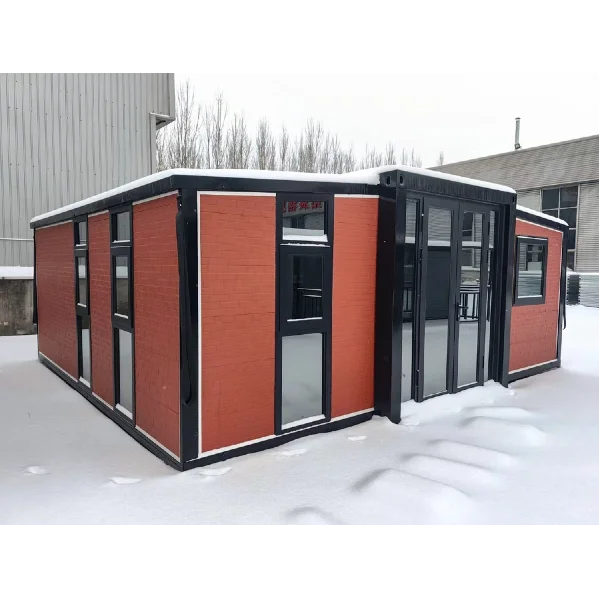
The quality of materials used in an expandable container house is non-negotiable. It directly correlates with the durability and lifespan of the structure. Steel is a commonly used material, and when opting for it, look for high-quality, corrosion-resistant grades. For example, corten steel is renowned for its ability to form a protective rust layer over time, safeguarding against further corrosion. This makes it ideal for outdoor use, especially in humid or coastal regions.
Aluminum is another option, prized for its lightweight nature and resistance to rust. It's often used for window frames and doors, reducing the overall weight of the container while maintaining structural integrity. In terms of insulation, materials like fiberglass or rock wool play a crucial role. They not only regulate the interior temperature, keeping it warm in winters and cool in summers, but also contribute to soundproofing. A well-insulated container house ensures energy efficiency, cutting down on heating and cooling costs. When inspecting a potential purchase, check for any signs of material wear, rust spots on metal components, or deterioration of insulation. This attention to detail can save you from future headaches and costly repairs.
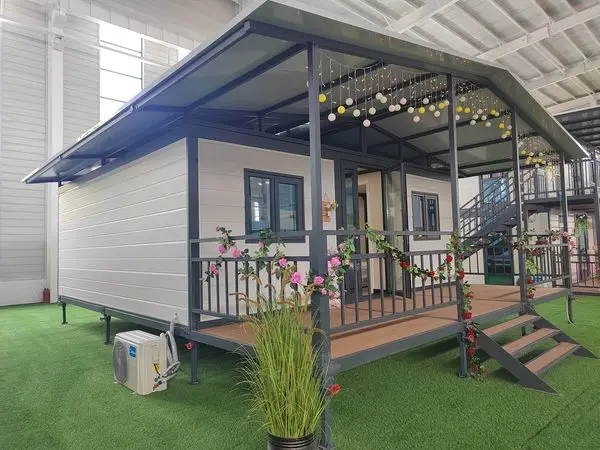
The expansion mechanism is the heart of an expandable container house. There are various types, each with its own merits. Manual expansion systems, often involving cranks or pulley mechanisms, are a cost-effective option. They offer a hands-on approach, allowing you to control the expansion process at your own pace. For DIY enthusiasts or those on a tight budget, this can be an appealing choice. However, it does require some physical effort and familiarity with the mechanism to operate smoothly.
On the other hand, electric expansion systems provide convenience at the touch of a button. Motors power the expansion, making it effortless and quick. This is especially beneficial for larger container houses or when frequent expansion and contraction are anticipated. For instance, a mobile office that needs to be set up and packed down regularly would benefit from an electric system to save time and manpower.
Regardless of the type, stability during expansion is paramount. Look for features like locking mechanisms that engage once the container is fully expanded, preventing any unwanted movement. Additionally, ease of maintenance is crucial. Components should be easily accessible for inspection and repair, ensuring that any potential issues can be resolved promptly without major disruptions. A well-designed expansion mechanism not only enhances the usability of the container house but also contributes to its long-term reliability.
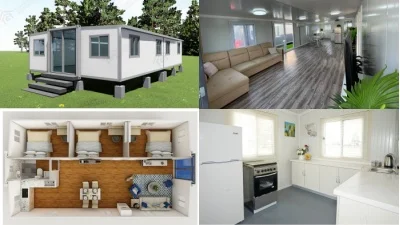
Proper insulation and climate control are essential for ensuring a comfortable living or working environment in an expandable container house. In regions with extreme temperatures, such as hot summers or cold winters, insulation becomes a top priority. Fiberglass insulation, for example, is a popular choice due to its excellent thermal resistance. It traps air within its fibers, creating a barrier that slows down heat transfer. This means that in summer, the hot air outside is kept at bay, reducing the need for excessive air conditioning. In winter, it prevents the warm air inside from escaping, cutting down on heating costs.
For areas with high humidity, like coastal regions, moisture control is crucial. Materials like closed-cell spray foam insulation not only provide insulation but also act as a vapor barrier, preventing condensation from forming on the walls and ceilings. This helps avoid issues such as mold growth, which can be detrimental to both the structure and the occupants' health.
In addition to insulation, the right climate control equipment is necessary. A high-efficiency air conditioner or heater, depending on the climate, should be selected. Look for units with programmable thermostats, allowing you to set temperature schedules and save energy. Ceiling fans can also be a great addition, as they help circulate air, creating a more even temperature distribution and reducing the workload on heating and cooling systems. Some advanced container houses even come with smart climate control systems that can be controlled remotely via a smartphone app, giving you the convenience of adjusting the temperature and humidity levels from anywhere. To further enhance energy efficiency, consider installing energy-efficient windows and doors, which have better seals and insulating properties. Simple actions like closing curtains during the hottest part of the day in summer or sealing gaps around doors and windows in winter can also make a significant difference in maintaining a comfortable indoor climate while minimizing energy consumption.

One of the most exciting aspects of expandable container houses is the plethora of customization options available. When it comes to the exterior, you can let your creativity run wild. Choose from a variety of paint colors to match your personal style or blend in with the surroundings. For a rustic cabin feel, earthy tones like browns and greens might be ideal. If you're aiming for a modern, sleek look, shades of gray or black with bold accent colors can make a statement. Some manufacturers even offer the option to add custom siding materials, such as wood panels or corrugated metal, to further enhance the aesthetic.
Moving inside, the possibilities are equally vast. Layout customization allows you to design the space according to your specific needs. Need a home office? You can allocate a corner with built-in desks and ample storage for files and electronics. For a cozy living area, consider installing a built-in entertainment center with shelves for your books, photos, and media devices. In the kitchen, you can select from different countertop materials like granite or quartz, and choose cabinet styles that range from classic shaker to contemporary flat-panel. Bathroom customization can include options like a walk-in shower with rainfall showerheads or a luxurious soaking tub. Don't forget about lighting – recessed lights for a clean look, pendant lights over a dining area for ambiance, and task lighting in workspaces to ensure functionality. With these customization options, your expandable container house can truly reflect your unique personality and lifestyle.

One of the significant advantages of expandable container houses is their mobility. When choosing a container house, consider its transportability. Look for features like built-in forklift pockets or crane lifting points, which make loading and unloading onto trucks a breeze. This is especially crucial if you anticipate relocating the structure frequently. For example, a construction site office might need to be moved as the project progresses, and easy transportability ensures minimal disruption.
Installation should be straightforward and hassle-free. Many expandable container houses come with detailed installation manuals, but it's still beneficial to assess the complexity. Some models can be set up by a couple of people in a matter of hours, while others might require professional assistance. Before installation, make sure to prepare the site properly. Level the ground to prevent any tilting or structural stress. If it's a permanent or semi-permanent installation, consider adding a proper foundation, such as concrete pads, to enhance stability. Additionally, check local building codes and regulations to ensure compliance, as some areas might have specific requirements regarding anchoring, electrical connections, and plumbing. Taking these steps will guarantee a smooth installation process and a safe, stable living or working environment.
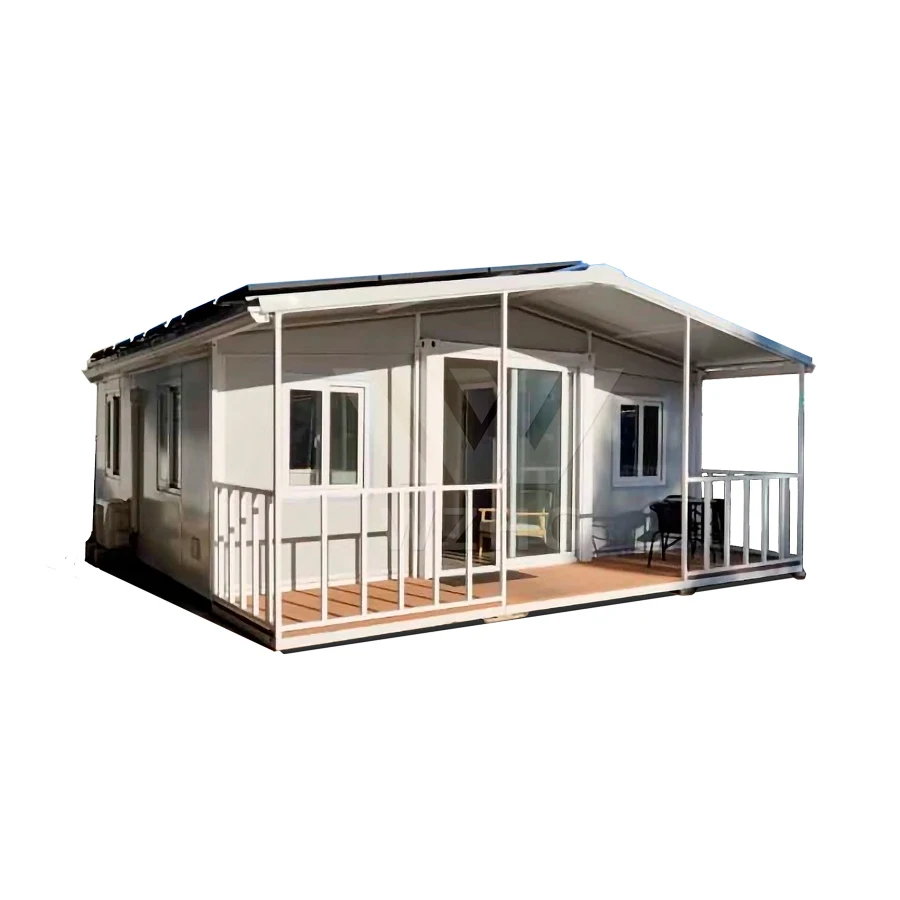
When it comes to purchasing an expandable container house, budget is a significant factor. The initial cost can vary widely depending on several elements. The size of the container is a major determinant; larger containers with more expansive floor areas and higher ceilings will naturally cost more. For instance, a 40-foot container house will generally be pricier than a 20-foot one due to the increased amount of materials and greater living or working space it provides.
The quality of materials also plays a crucial role. High-grade, corrosion-resistant steel and top-notch insulation materials will up the price tag, but they offer long-term durability and energy efficiency, potentially saving you money in the long run. For example, investing in a container house with premium fiberglass insulation might mean a higher upfront cost, but the reduced heating and cooling bills over the years can offset this expenditure.
Customization options are another cost consideration. If you desire elaborate interior finishes, such as hardwood flooring, custom cabinetry, or designer lighting fixtures, be prepared to pay extra. Similarly, unique exterior paint colors or siding materials will add to the overall cost.
It's also essential to factor in potential additional expenses. Transportation costs can be significant, especially if you need the container house delivered over a long distance. Installation fees might apply if you require professional help to set up the structure properly. Additionally, any future modifications or expansions you plan for should be budgeted for in advance. By carefully weighing these cost aspects against the quality and features you need, you can make an informed and financially sound decision.
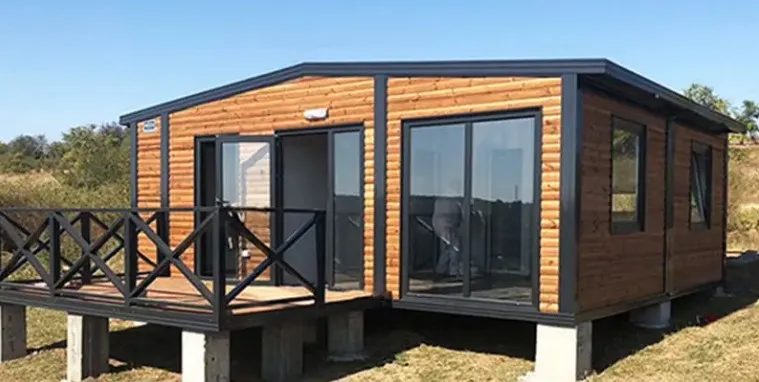
Purchasing an expandable container house is an investment that demands careful thought. By meticulously considering factors such as size, material quality, expansion mechanism, insulation, customization options, mobility, and budget, you can make a choice that aligns with your requirements and lifestyle. Whether you seek a cozy retreat, a functional office, or a storage solution, the right expandable container house can transform your vision into reality. So, take your time, do your research, and embark on the journey to create your ideal living or working space.
E-mail format is wrong

E-mail format is wrong
